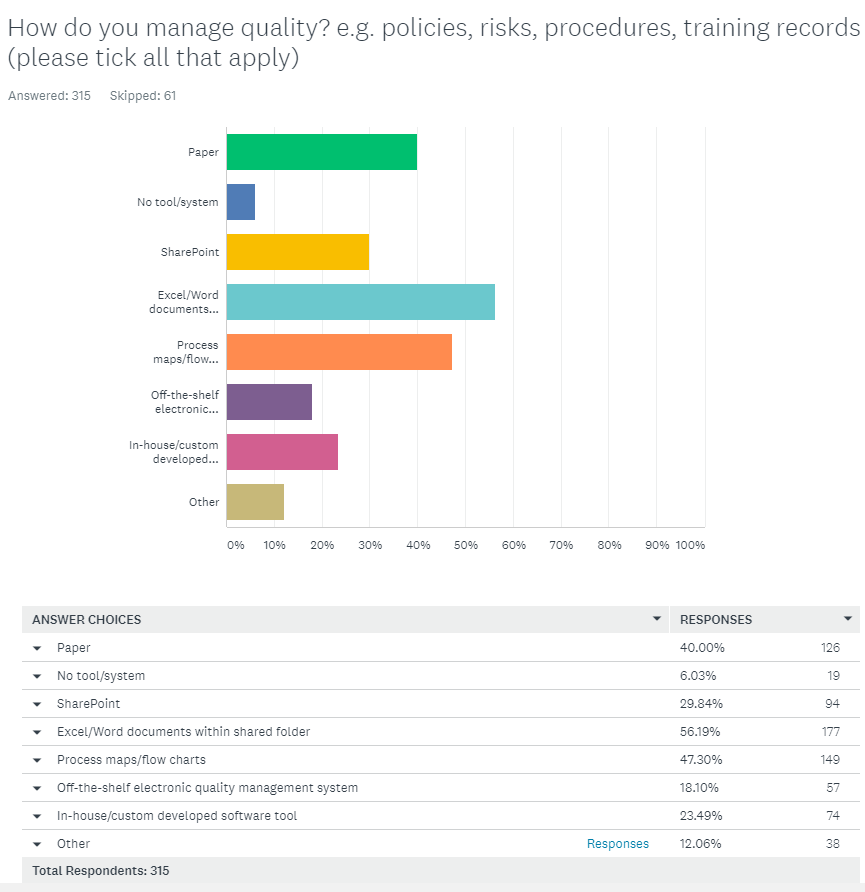Want to contribute to this article?
Unless you have been living on a remote galaxy far, far away on a planet with two suns and three moons, then you might have missed a certain level of buzz about the new Star Wars movie.
In the spirit of all things Star Wars, it got the Qualsys team to consider if Darth Vader had an electronic quality management system, would he have failed?
Risk Management:

If your main strategic goal is to take over the universe and your strategy is to do this by blowing up planets, reputation will be the cornerstone to success.
So for Darth Vader, this means ensuring that his key differentiator, his galactic superweapon, aka the Death Star, does not get blown up.
Carelessly forgetting or ignoring the risk of the Death Star's exhaust port is unacceptable. It was only a matter of time before someone from the Rebellion recognised the weakness and decided to attack it. This careless error led to major delays, financial losses and, most importantly, reputational damage.
Had Darth Vader used an electronic Risk Management system, the risk of the exhaust port being attacked could have been identified, communicated and controlled.
Document Management System:
 Having passed the Empire’s weak security systems on board the Death Star, R2-D2 simply plugged into an easily accessible wall port and downloaded confidential high value prisoner data. This is an example of really poor document control.
Having passed the Empire’s weak security systems on board the Death Star, R2-D2 simply plugged into an easily accessible wall port and downloaded confidential high value prisoner data. This is an example of really poor document control.
Very few personnel actually needed to access the prisoner data. A Document Management system would have ensured that this critical data was only accessible to a minimal number of users.
Issue Management System:

Darth Vader and a number of Imperial executives met for a strategy meeting to plan what to do about the stolen blueprints. Yet, instead of resolving any issues, they just ended up squabbling.
An Issue Management system would automatically enrol relevant stakeholders into a pre-defined workflow. This would mean that any unresolved issues would be automatically escalated to top management.
Training Records Management:

Stormtroopers were poor at pretty much everything. They couldn't hit targets, even when their life depended on it and their weak minds were incredibly susceptible to the force. This caused a number of issues.
If the Stormtroopers had the appropriate training, they would have been much more effective at combatting the rebellion. A centralised Training Records management system would ensure all the Stormtroopers had relevant and current training, such as being able to identify which droids they were looking for.
Audit Management System:

In Return of the Jedi, Darth Vader arrives mid-construction of the new Death Star for a progress meeting. The project manager gives the age-old excuse of a "lack of resources".
Delays are common on large construction projects so keeping everything on track is essential.
With an Audit Management system, Darth Vader could have instantly understood why the project was delayed and put into place the correct actions for ensuring the project gets back on track.
In conclusion, whilst Darth Vader had clear strategic goals, vast technological resources and 'the Force', he completely failed to deploy policies, procedures and plans, which led to his failure.
The quality management lessons we can take from this are simple: use a centralised, pre-emptive and communicative management system to achieve your strategic goals.
What better way to embed a culture of quality than through this space opera? Share this article with your team.
If you have ambitious business goals, find out how EQMS can support your organisation to achieve your strategic goals by downloading EQMS Datasheets.
Image Credits:
http://i.imgur.com/modde9i.gif









Share your thoughts on this article